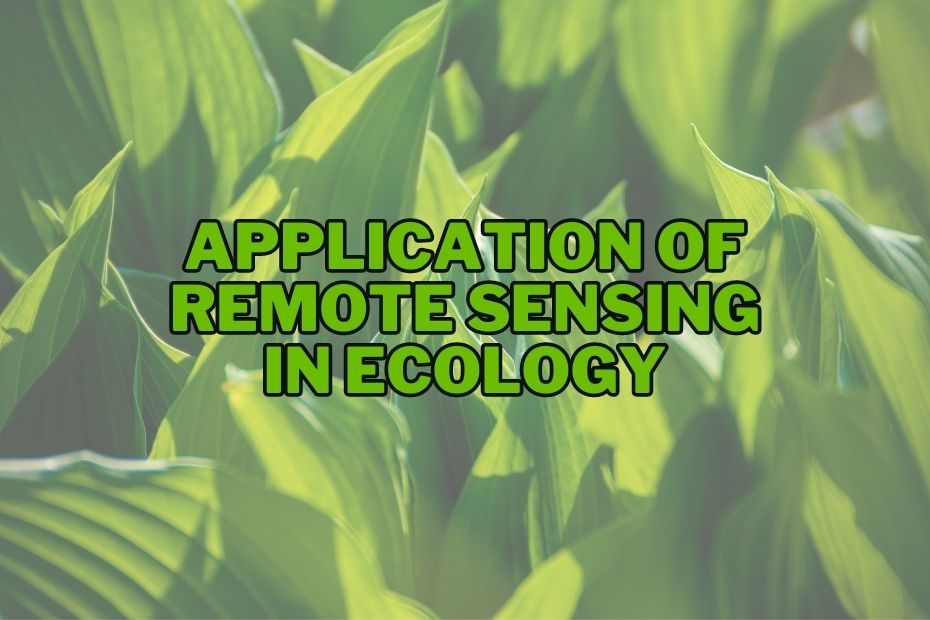The emergence of remote sensing technology has revolutionized the field of ecology, opening new avenues for understanding and preserving our environment. This article delves into the numerous application of remote sensing in ecology, ranging from land cover mapping and deforestation monitoring to climate change research and invasive species detection.
It enables scientists to monitor and analyze various ecological parameters, such as land cover changes, biodiversity assessment, and habitat mapping.
The Future of Remote Sensing in Ecology
As technology advances, so does the potential of remote sensing in ecology. With improvements in resolution, data processing, and machine learning techniques, the future of remote sensing in ecology promises even more detailed and accurate insights.
Application of Remote Sensing in Ecology
When remote sensing meets ecology, the possibilities are vast. This combination allows us to examine ecological phenomena on a scale that would otherwise be unachievable. Let’s dive into the diverse applications of remote sensing in the world of ecology.
1. Land Cover Classification and Mapping
One of the first steps in ecological management is understanding the land’s nature and composition. Using remote sensing, ecologists can classify and map land cover based on different characteristics, such as vegetation, water bodies, and human-made structures. This technology can provide high-resolution, accurate data on a large scale, allowing for better decision-making in areas like urban planning, agriculture, and conservation.
2. Monitoring Deforestation and Forest Degradation
Remote sensing is a powerful tool for monitoring deforestation and forest degradation. Using satellite imagery, ecologists can track changes in forest cover over time, identifying areas of concern. This can help policymakers and conservationists develop strategies to mitigate the impact of deforestation and promote sustainable forest management.
3. Studying Wildlife Habitats and Biodiversity
Wildlife habitats and biodiversity are critical to ecological balance. Remote sensing allows researchers to monitor these aspects from a bird’s-eye view, giving insights into species distributions, habitat fragmentation, and population dynamics. This information is crucial for conservation efforts and helps in making informed decisions on protecting biodiversity.
4. Climate Change Studies
With climate change being a significant concern, remote sensing provides valuable data to study its effects. Satellites capture images and data related to surface temperature, ice cover, sea-level changes, and more. These provide critical evidence for climate change studies, helping scientists understand the changes occurring in our environment and predict future trends.
5. Invasive Species Detection
Invasive species can cause significant ecological damage by disrupting local ecosystems. Remote sensing technology allows ecologists to detect the presence of these species, assess their spread, and monitor their impact. This quick and efficient detection facilitates timely intervention, mitigating the potential damage.
6. Wetlands Monitoring
Wetlands are vital ecosystems that provide a host of ecological services. However, they are often under threat from urbanization and pollution. Remote sensing offers a cost-effective and efficient way to monitor wetlands, track changes over time, and detect potential threats. This data can inform conservation strategies and promote the sustainable use of wetland resources.
7. Estimation of Biomass and Carbon Sequestration
Understanding the carbon cycle is fundamental in tackling climate change. Remote sensing can estimate biomass and carbon sequestration by analyzing vegetation cover and health. This information can help in developing strategies for reducing greenhouse gas emissions and promoting carbon-neutral practices.
8. Detection of Disease Vectors
Remote sensing can help track environmental conditions conducive to the spread of disease vectors, like mosquitoes. By monitoring factors like temperature, precipitation, and vegetation cover, scientists can predict potential disease outbreaks and strategize public health interventions.
9. Urban Heat Island Effect Study
Urban areas often suffer from the ‘urban heat island‘ effect, where the city’s temperature is higher than its surroundings due to human activities. Remote sensing can monitor these heat islands, providing data that can inform urban planning and mitigate the adverse effects of urban heat islands.
10. Natural Disaster Assessment
Remote sensing plays a pivotal role in natural disaster management. It can provide real-time data before, during, and after disasters, helping in early warning, response, damage assessment, and recovery planning.
Conclusion
In conclusion, remote sensing application in ecology are vast and transformative. This technology holds immense promise for a sustainable and ecological future. By harnessing its potential, we can gain better insights into our environment and develop solutions to preserve it for future generations.
FAQs: Application of Remote Sensing In Ecology
How is remote sensing used in ecology?
In ecology, remote sensing is used in various ways, including land cover mapping, monitoring deforestation, studying wildlife habitats, and climate change studies.
Can remote sensing detect invasive species?
Yes, remote sensing technology can detect invasive species, enabling early intervention and protecting native ecosystems.
How does remote sensing contribute to climate change studies?
By monitoring polar ice caps, ocean temperatures, and atmospheric composition, remote sensing plays an integral role in studying and combating climate change.
What is the future of remote sensing in ecology?
As technology advances, the potential of remote sensing in ecology is expected to increase with improvements in resolution, data processing, and machine learning techniques.
